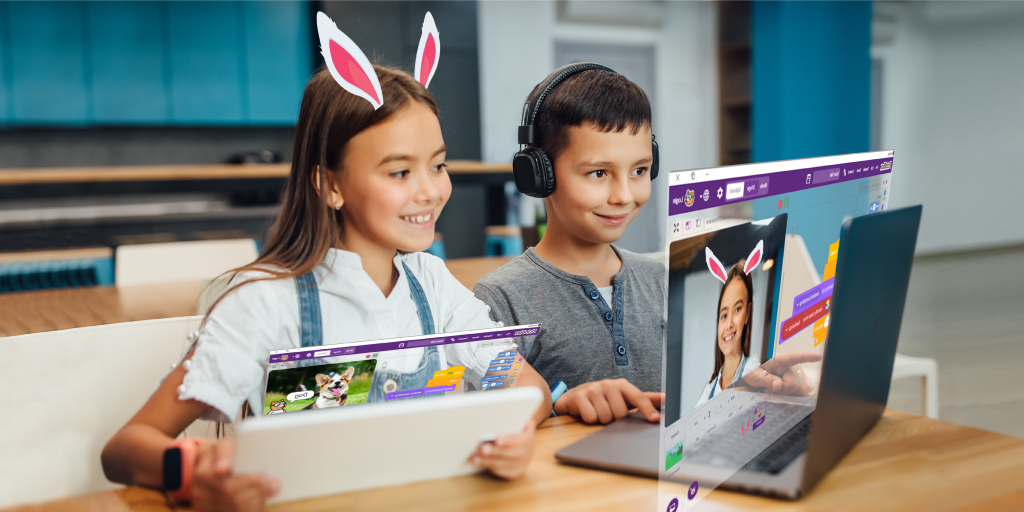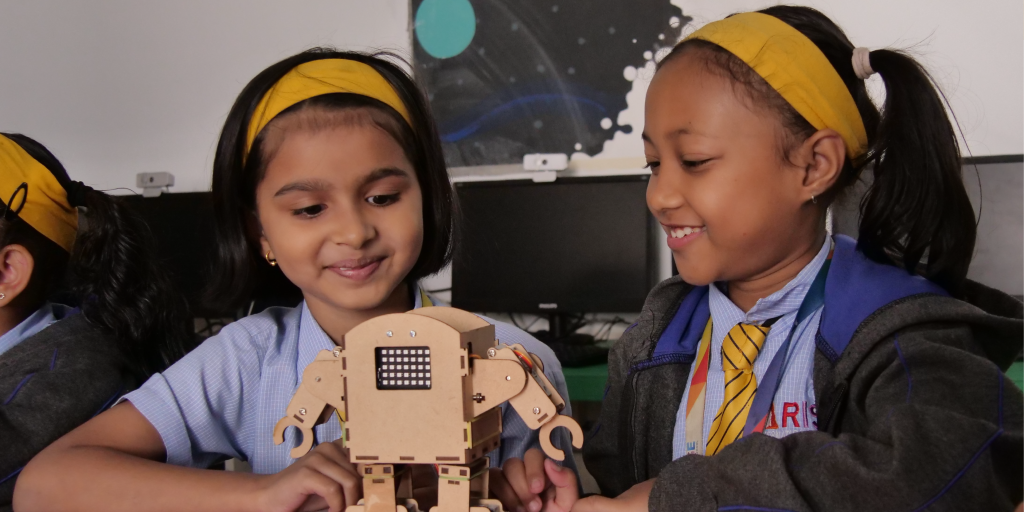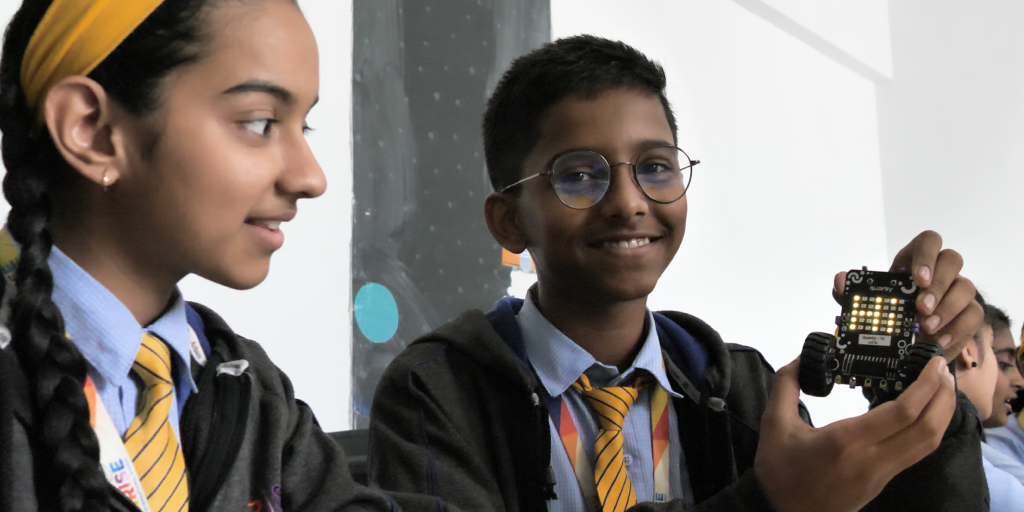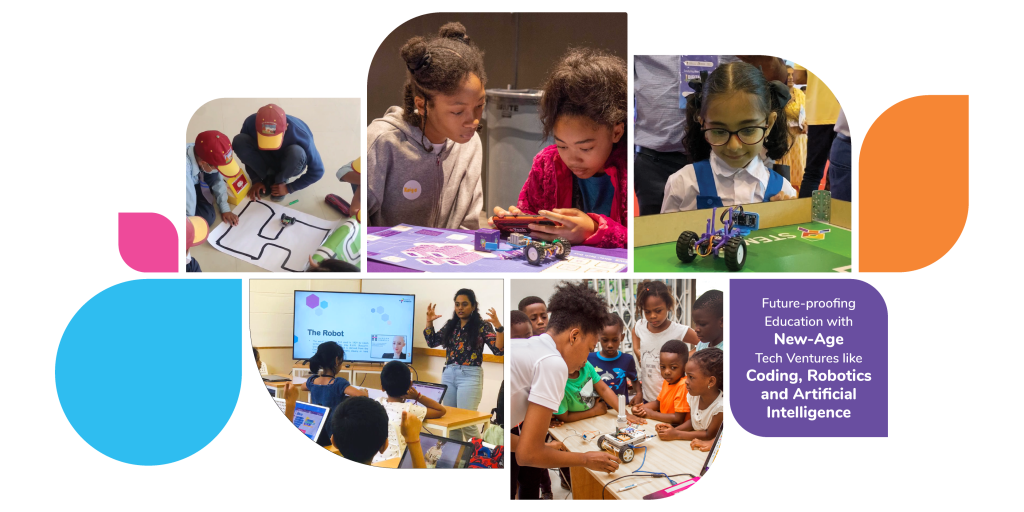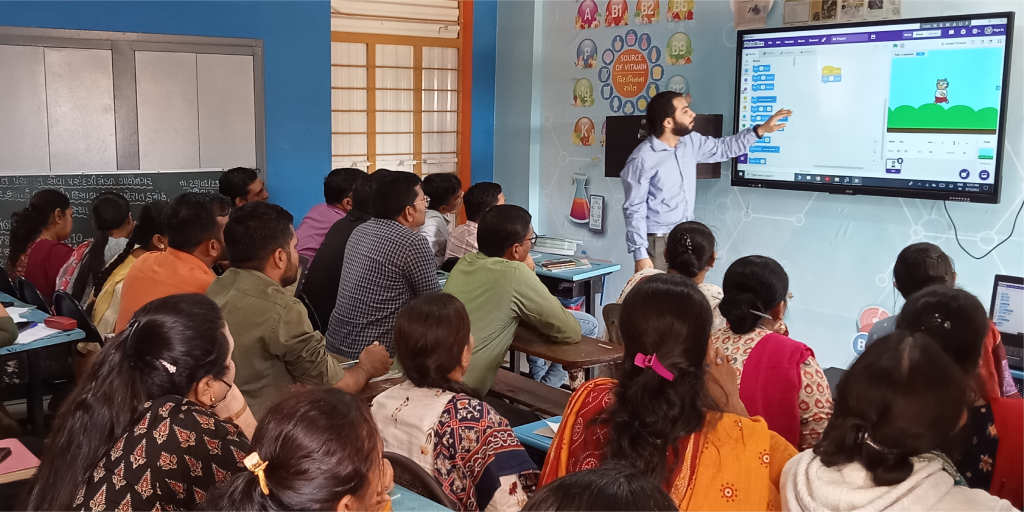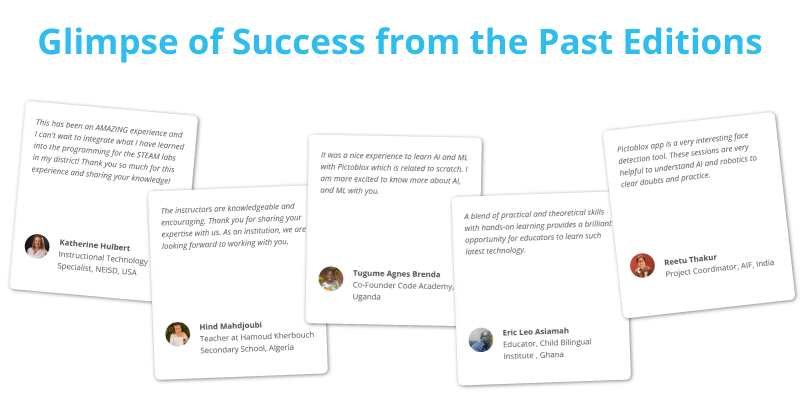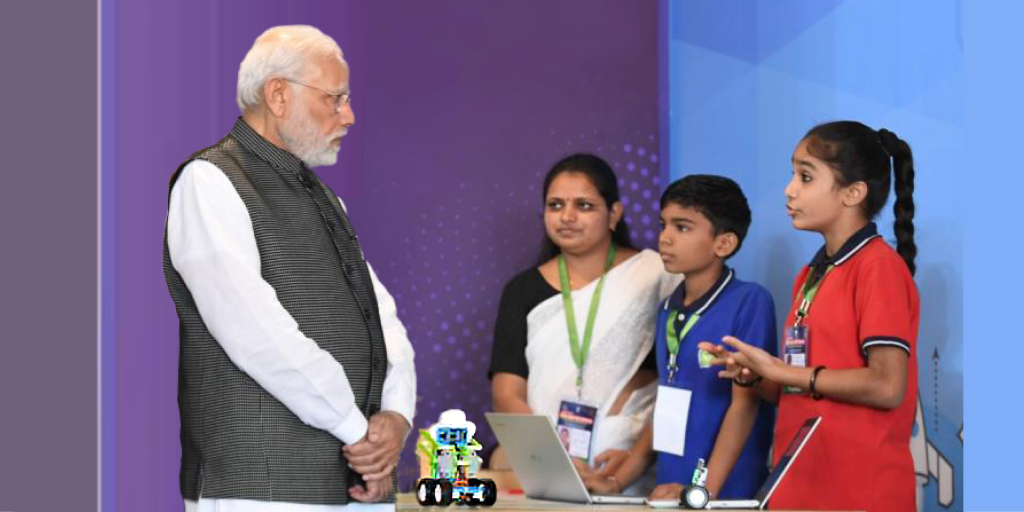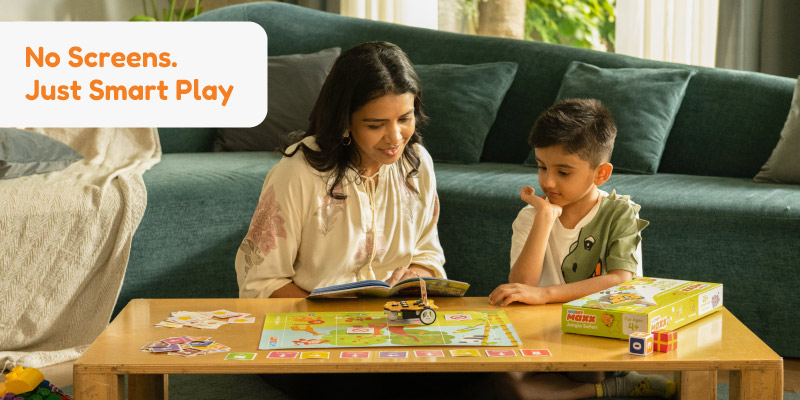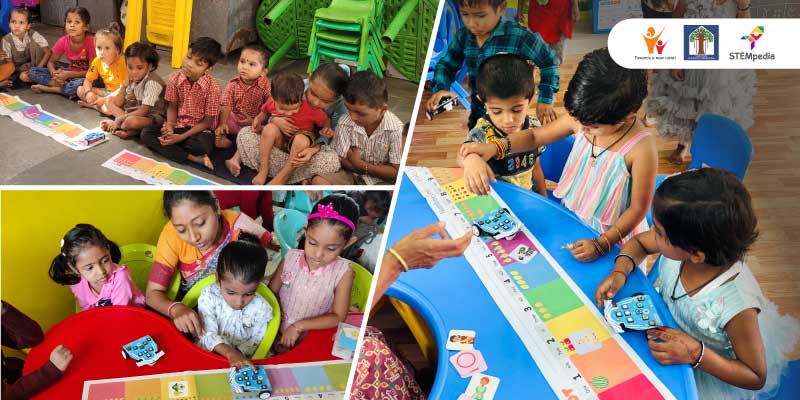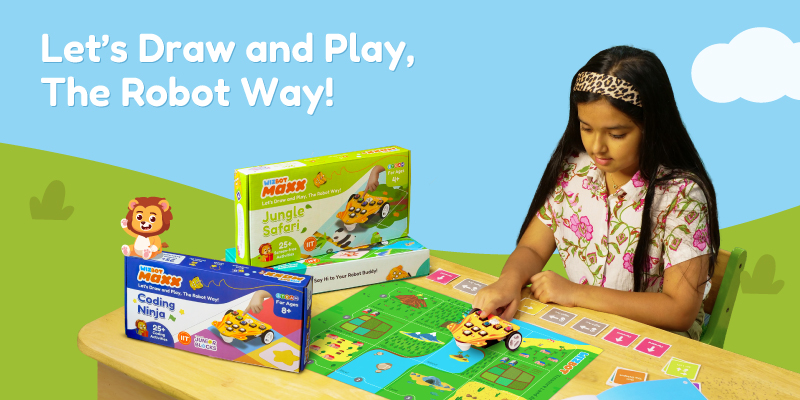In today’s rapidly evolving world, future tech education serves as a vital force. But how can this impact a country like India, where over 1.5 million engineers graduate annually?
Technology in education is not just about coding and robotics; it’s about igniting minds with innovation and entrepreneurship. Imagine the journeys of successful Indian entrepreneurs like Sundar Pichai and Satya Nadella. How did they reach such heights? A deep understanding of future technologies played a crucial role.
As we look ahead to future trends, equipping students with 21st-century tech education is important. Still, how can future tech education transform students into tomorrow’s innovators and entrepreneurs? Continue reading to know how STEMpedia is leading the charge to empower the next generation.
The Progress of Future Tech Education in India
The landscape of future tech education in India is rapidly transforming. The passion for innovation and entrepreneurship is fueled by a booming interest in global education tech and the innovative spirit of the nation’s youth. India’s position is increasingly significant as we seek a future rich in technology-driven solutions.
EdTech companies play a vital role in pioneering advancements and reshaping learning experiences. Among these leaders, STEMpedia stands out, integrating 21st-century skills into K-12 education, where technology adoption statistics reveal a promising uptick.
Over 70% of schools affiliated with major boards collaborate with AI and Coding apps for kids like PictoBlox, reflecting a significant hold on future tech education. This shift prepares students for work from home opportunities and nurtures innovative entrepreneurs. The growing demand is key to sustaining India’s growth in the digital era.
So, how are these developments influencing your approach to education?
The Need for Innovation and Entrepreneurship Education in India
As per the Ministry of Education, innovation and entrepreneurship are essential for economic growth and societal advancement. Despite this understanding, a significant gap persists in India’s education system.
According to the NEP 2020, one of the guiding principles for India’s education system is to nurture creativity and critical thinking in learners to foster innovation. However, traditional learning methods still dominate, lacking hands-on, practical applications that foster creativity and entrepreneurial thinking. To bridge this gap, future tech education must be integrated early into students’ curricula.
STEMpedia’s Role in Shaping Future Innovators
At the forefront of future tech education in India, STEMpedia is a trendsetter. We equip young minds with the educational tools and 21st-century skills needed for innovation and entrepreneurship. With our comprehensive offerings, including STEM kits, DIY robot kits like Quarky, and educational apps like PictoBlox, STEMpedia turns abstract concepts into interactive and enjoyable learning experiences.
We integrate cutting-edge technology like AI, ML, coding, AR/VR, and robotics into the educational curriculum. Our AI and coding platform, PictoBlox, allows students as young as grades 1 and 2 to delve into AI, coding, and ML.
We use engaging interfaces, gamification, and story-based learning for individuals’ overall growth and development. This hands-on approach makes learning more intuitive and impactful, fostering a deep understanding of complex subjects early in education. PictoBlox currently has 180k+ monthly active users, with a total user base of 1.4M from 90+ Countries.
The mission of STEMpedia is clear: to democratize access to future tech education and empower the next-gen innovative entrepreneurs.
By providing AI and Robotics Labs and offering structured CBSE, ICSE, and IB curricula, STEMpedia ensures that students are not merely consumers of technology. These curricula align with the NEP 2020 guidelines and NCF 2023 frameworks, turning students into creators and problem-solvers.
Impact So Far
STEMpedia’s commitment to future tech education is not just creating a pathway but a broad highway for young minds to become the innovators of tomorrow. With our visionary target to transform 100 million young minds, STEMpedia stands as a hope for innovation in education.
At STEMpedia, we foster inclusion and diversity through events like AWS Girls’ Tech Day and Eklavya Innovation Learning Lab. Our collaborations with organizations like Ericsson for the Girls in ICT program and SBI Cards’ Pahel are making strides in encouraging young girls and women to pursue STEM careers. These initiatives are key for promoting gender diversity and ensuring an inclusive atmosphere within the STEM fields.
The STEM and Robotics Impact Program further magnifies our impact. We have executed over 50 impactful programs in partnership with various government and private entities. These programs span countries like the USA, India, UAE, Nigeria, and Kenya.
STEMpedia reaches students by providing AI and Robotics education kits, learning materials, tinkering lab setups, and expert teacher training. This effort ignites a passion for innovation and problem-solving through technology.
Establishing over 300 AI and Robotics Labs and more than 500 Atal Tinkering Labs has created an ecosystem where students can experiment, learn, and thrive. These tinkering labs are not just educational spaces but incubators for future technological leaders.
A Glimpse of Codeavour: Our Impact Program
A jewel in STEMpedia’s crown is the Codeavour International competition. Since its inception in 2019, it has grown 230x to become the world’s biggest AI, Robotics, and coding competition for students. As a result, fostering innovation and creativity among youth globally.
The next-gen innovation fest has impacted over 300,000 students from over 70 countries, making it a cornerstone of STEMpedia’s impact efforts. This time, the showdown for Codeavour 5.0 International took place in Dubai.
You can check out some innovation project ideas for students that illustrate how future tech education can address real-world issues. These projects test the effectiveness of STEMpedia’s tools in nurturing students’ critical thinking and problem-solving skills.
How Can Educators Benefit from STEMpedia’s Future Tech Education
Educators play an important role in molding future innovative entrepreneurs, and STEMpedia’s resources significantly amplify this impact. With specialized STEM education teacher training, educators can leverage the comprehensive CBSE, ICSE, and IB curriculum. Our course structure perfectly aligns with NEP 2020 guidelines and the NCF 2023 Framework.
This training empowers teachers to effectively integrate future tech education into their classrooms, enhancing student engagement and learning outcomes. Our 5-day teacher training program will cover the basics of AI, ML, Coding, and Robotics. We also have year-long support and regular doubt-clearing sessions to ensure educators stay ahead of future tech education.
STEMpedia’s Teacher Training Program offers an unique opportunity. Our notable supporters in the journey are NITI Aayog, ARTPARK, and TATA Class Edge. We also partner with international organizations such as Al-Jazari in Algeria, IOT Kids in Iraq, and Robotna in Jordan.
Our initiative has enriched 15,000+ teachers across 80+ countries with cutting-edge educational tools.
Benefits of the STEMpedia Teacher Training Program:
- Learn alongside international educators
- Access comprehensive AI, coding, and robotics resources
- Win prizes and receive recognition
- Opportunity to become a STEMpedia Ambassador
- Earn a badge and certificate accredited by ARTPARK, STEMpedia, and STEM.org
Following the CBSE teacher training program, educators can also join our International Educators Bootcamp. This 2-week online boot camp enables school educators globally to enhance their knowledge in AI, ML, Robotics, Python, and ChatGPT. This program empowers educators to bring cutting-edge technology and innovative teaching methods into their classrooms.
Register Now to become a Certified AI Educator with STEMpedia.
Join our Teacher’s Community for more information on the International Educators Bootcamp and take the first step towards transforming your teaching experience.
For more information, contact us at contact@thestempedia.com.
Global Trends and Career Opportunities
Around the world, the adoption of future tech education is reshaping career landscapes and economic possibilities. Emerging global trends like AI, ML, AR/VR, quantum computing, and cybersecurity are key areas where today’s learning directly correlates with tomorrow’s earning opportunities.
If educational institutions delay adopting these technologies, they risk leaving students underprepared for high-demand roles like data scientists, blockchain developers, and IoT architects.
Remember, It’s never too late to be what you might have been. Adopt future tech education to stay competitive. Consider internships in web development or explore DPIIT internship opportunities to kickstart your innovative entrepreneur career in these exciting fields.
In A Nutshell
Future tech education holds immense potential to revolutionize innovation and entrepreneurship among Indian students. By integrating cutting-edge technologies such as AI, ML, AR/VR, Coding, and robotics into early education, STEMpedia is paving the way for a new era of educational excellence. This forward-thinking approach prepares students for dynamic careers as data scientists, blockchain developers, and IoT architects and nurtures essential 21st-century skills.
Schools and educators can collaborate with STEMpedia to enhance learning experiences. Such partnerships can greatly amplify the impact of initiatives like Atmanirbhar Bharat and the Skill Hub Initiative, which aim to strengthen India’s self-sufficiency in education.
Embrace these opportunities to prepare India’s youth for a technology-driven future and to lead global innovation.


